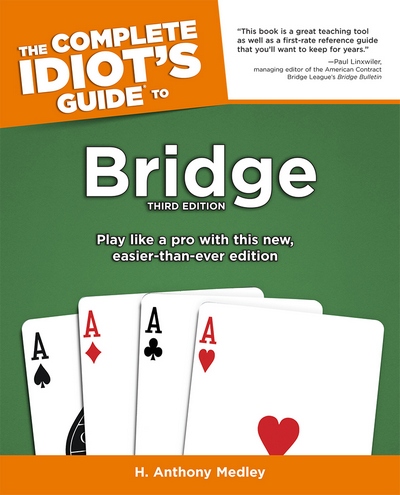| The first and second editions of Complete Idiot's Guide to Bridge by H. Anthony Medley comprised the fastest selling beginning bridge book, going through more than 10 printings. This updated Third Edition includes a detailed Guide to Bids and Responses, along with the most detailed, 12-page Glossary ever published, as well as examples to make learning the game even easier. Click book to order. Available in all bookstores and on Kindle. | ||
|
Dateline – Saigon (9/10) OVID.tv by Tony Medley 96 minutes NR. Back in the day I trusted our government. That articulate good-looking womanizer JFK wouldn’t lie to us, would he? His cabinet was called The Best and the Brightest. Well, it turns out they were The Worst and the Dumbest, led by his Secretary of Defense Robert McNamara. This documentary about the youthful newsmen who covered the start of the Vietnam war in the early ‘60s opens with a shocking picture of US troops in a trench watching an atomic bomb test blast just a few miles away. These poor troops were ordered by their government, which they trusted, to be stationed dangerously close to the detonation site, soaking up deadly nuclear waves. This mindless government faux pas sets the stage for the story of how a few young newspaper correspondents, Malcolm Browne, Peter Arnett, and Horst Faas (photographer) of the AP, Homer Bigert and David Halberstam of the New York Times and Neil Sheehan of UPI were sending back reports of what was really going on in Vietnam while the government and the Army were lying through their teeth. There is a telling clip of a JFK news conference where he is asked flat out if the U.S. military was engaging in hostilities and JFK replies “no,” when, in fact they were. And another where the VC wiped out a village and got away and a four star general lied about it, calling it a “victory,” even though he had never been to the site of the battle. Naturally, the government came down hard on these correspondents, especially Halberstam. The film has recordings of White House meetings where they discuss in detail how to deal with their reporting. Until the Bushes got into office, the Democratic party has been the party of war from the beginning of the 20th Century (well, they were responsible for the Civil War, too, but that’s going back a ways). Woodrow Wilson got us involved in WWI (the most nonsensical war in the history of mankind) when there was no conceivable reason for us to resolve Europe’s idiotic problems. FDR got us into WWII (there’s a lot of credible evidence that while he might not have sanctioned the attack on Pearl Harbor, he subtly seduced the Japanese into attacking us as a pretext to convince his anti-war American populace to jump into the war). Truman got us into Korea and JFK and LBJ got us into Vietnam after the French had wisely pulled out after the fall of Điện Bięn Phủ in 1954. And they all lied about it. Wilson ran his 1916 campaign on staying out of the war; Kennedy repeatedly lied about our involvement in Vietnam, as this film flagrantly shows, and LBJ went so far as to lie about a phony attack in the Gulf of Tonkin that never happened to get Americans on board for his plan to increase our troop levels. Written and directed by Thomas D. Herman and narrated by Sam Waterston of “Law and Order” fame, this shows how these young newspaper correspondents were voices crying in the wilderness as they wrote the truth to the lies of the army and the government about what was going on in Vietnam while Generals and politicians closed their eyes to the truth and told lie after lie to the people. Most Americans, including me, believed the government and thought these writers were the bad guys. They weren’t, and this movie proves it. There is only one jarring moment. Arnett is shown saying, “The police arrested Malcolm Browne and I…” How can any professional writer make such a ghastly grammatical error? Oh, well, that’s irrelevant. This is a terrific film and it’s told mostly through archival interviews with each of the journalists who tell their fascinating personal stories years later. I hope lots of people can see it, especially those who lived through those years.
|
||
